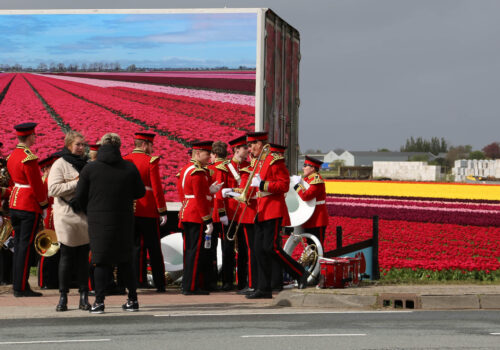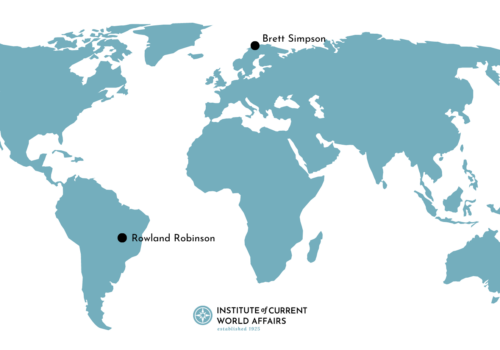AMSTERDAM — The cabin nestled in the woods near the city of Tilburg in the eastern Netherlands evoked a Grimms’ fairytale with its low roof, wooden beams and colorful gnomes sprouting from the ground. As I walked toward the entrance, I passed gleaming Audis, Mercedes and BMWs. The types of businessmen and women I met inside exist all over the world, but in few places can they meet so openly.
Suits and collared shirts mixed with quarter-zips and cardigans. The people had the self-assurance of entrepreneurial millionaires. On a stage, panelists discussed how to engage with local governments and about the future of national regulation. The trade association annual meeting was similar to others I’ve attended: complaints about government overreach mixed with promises of exciting growth opportunities. What was unusual is that the production, distribution, marketing and sale of the particular product in question is illegal in the Netherlands and most of the world. But thanks to the Netherlands’ Gedoogbeleid—tolerance policy—these coffeeshop cowboys and cowgirls could congregate without fear of a SWAT team busting down the door.
Dutch coffeeshops are (in)famous around the world because until some American states started legally selling medical and recreation cannabis in 2012, they were some of the only places in the world where consumers could buy and enjoy cannabis and hash—a concentrated form of cannabis sourced in Morocco—without fear of arrest.
I had expected to find the kind of symbiotic relationship between coffeeshops and the government now found in US states with recreational cannabis markets: quibbles about regulation smoothed over by handsome profits and robust tax collection. The reality is a mutual distrust and conflictual relationship that effectively divides the drug market and provides social environments for use but also feeds organized crime and creates unnecessary risks for users.
The first coffeeshops opened in the early 1970s, their founders inspired by American hippie and youth culture of the 1960s. At the time, popular dance clubs like Paradiso had sanctioned “house dealers” who sold drugs inside. But the quality was bad and prices expensive, so the first coffeeshop pioneers set up establishments posing as tea parlors in order to smoke better weed with their friends, and friends of friends.
In the early years, coffeeshops were routinely raided by the police. But in 1976, a left-wing coalition government struck a deal with conservative parties to fundamentally amend the Netherlands’ Opium Act. Under the revised law, the government treated cannabis, and later hallucinogens and psychedelic mushrooms, as “soft drugs,” satisfying liberals. Heroin, cocaine, MDMA and amphetamines were classified “hard drugs” with raised penalties that appeased conservatives. From that compromise came Gedoogbeleid, according to which the government would tolerate soft drugs to focus on the disrupting the production and trafficking of hard drugs. It’s important that drug use itself was and is not illegal. That allows users to seek treatment, housing and other services when needed, which is not the case in the United States. While the law has been tweaked since then, the basic framework has held constant for the past 48 years.
August De Loor was a street-corner worker, similar to an outreach social worker, in Amsterdam back then. I met him at his apartment on the first floor of an Amsterdam townhouse. His living room is filled with Brazilian art, African masks, Buddhist statuettes and antique opium pipes. He proudly demonstrated his recently installed vintage cassette player and sound system for listening to music from the good old days like the Beach Boys. At 75, he is lively with an undiminished passion for helping people who use drugs.
August is credited with being one of the leading pioneers of harm reduction for drug users of all types in the Netherlands. He recalls 1970s Amsterdam: “The dream of the ’60s became the nightmare of the ’70s. The Vietnam War, unemployment, poverty among young people. The city of Amsterdam, you can’t imagine it anymore… street dealers, broken houses, junkies living on the street, nobody wanted to live here anymore.” Along with despair came an increase in heroin use as the counter culture’s hard drug of choice.
By reforming the Opium Act and tolerating coffeeshops, the government aimed to separate the drug market of soft and hard drugs because most dealers sold both. By letting people buy soft drugs in a coffeeshop, the risk of their buying hard drugs from street dealers was greatly reduced. Crucially, coffeeshops also acted as social gathering places. Before Covid-19, there was no take-away option. By consuming in a coffeeshop, people were surrounded with a community environment similar to a bar’s. That reduced the use of drugs alone at home or in the street.
It is interesting to note that the Netherlands sanctioned cannabis use during its heroin epidemic, and 40 years later, the US states legalized cannabis in the midst of their own heroin crises.
Today, coffeeshops continue to be seen as effective prevention tools keeping soft drug users from buying from street drug dealers who might entice them with harder drugs. That is perhaps more relevant today than it was in the 1970s because of the proliferation of substances now sold on the street. Amsterdam drug dealers peddle everything from cocaine to Xanax to synthetic designer drugs with artistically pleasing pdf formatted menus up to 29 pages long that detail dosage, consumption, duration, effect, cost and a delivery service to your door within 30 minutes or less—more convenient than ordering a pizza.
The government can also control the number of coffeeshops without the kind of violent turf wars that would surely break out in a completely illegal market, as is the case with other drugs. Nino Brown, a former street dealer turned social worker in Diemen, a town southeast of Amsterdam, remembers that “when the coffeeshop moved into the neighborhood, three or four street dealers went out of business.”
Entering a coffeeshop is like entering a bar. After getting your ID checked at the door—a practice European bars usually don’t do—you approach a counter staffed by budtenders where you can order from a menu of pre-rolled joints or packaged products to roll yourself. Unsure what to get? The budtenders can help guide you about the expected effect different varieties have. Coffeeshops can’t sell food but they offer non-alcoholic drinks such as tea, coffee and sodas. After ordering, you take your goods to an available table and sit down for a smoke. Each coffeeshop cultivates its own aesthetic, from wooden dive to cosmopolitan chic.
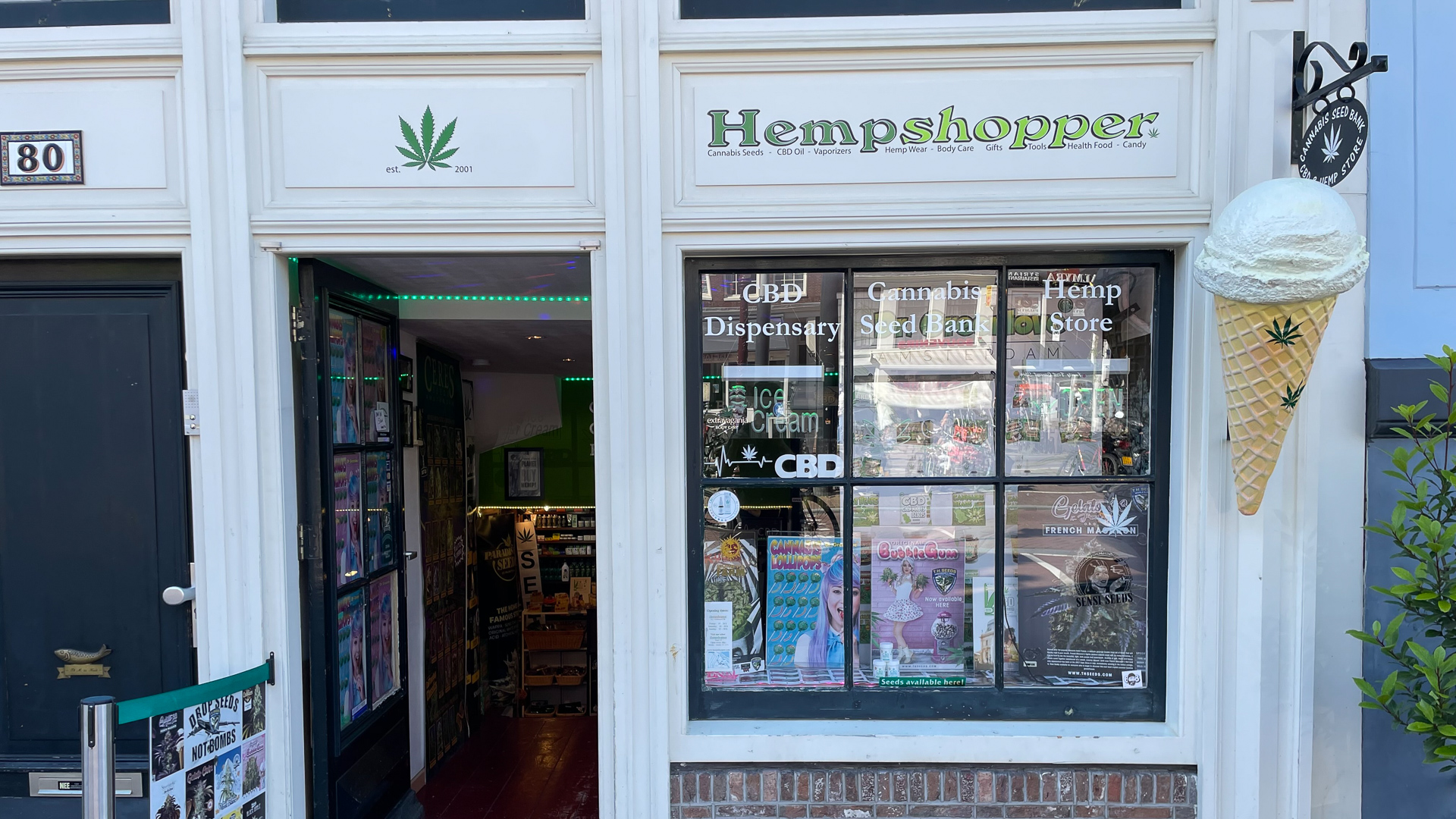
To get an inside view of how coffeeshops function, I met Noah at Eggs Benedicted overlooking the Prinsengracht canal near busy Leidseplein square in central Amsterdam. Noah is a pseudonym for protecting his privacy and that of the coffeeshop he works for since he described illegal activities. In his early 40s, Noah is friendly with the energy of a serial entrepreneur waiting for a big break. Originally from outside Amsterdam, he moved to the city in his early 20s in search of education and work. He found that working part-time as a budtender was a laid-back way to make good money to help sustain his other legal business interests.
Unlike in the United States, there is no standard for the cannabis sold in coffeeshops because it is an illegal product. “Each coffeeshop owner sets their own quality control,” Noah said, “which may involve a designated employee smoking samples, or simply packing it up trusting the good word of the growers they’re buying from.” The government forbids coffeeshops from testing their cannabis in labs for pesticides or percentage of active cannabinoid compounds. The production is completely unregulated in a way that could too easily harm users in my opinion.
The local Herring Stall and corner Doner Kebab have much stricter quality controls than a coffeeshop does for the cannabis and hash it sells. Runners who ferry cannabis and hash between coffeeshops and their illegal store houses can be prosecuted for trafficking if caught by police. In that sense, US states that have legalized cannabis for medical and recreational use are far ahead of the Netherlands in their rigorous seed to sale safety regulations.
Quality matters. Cannabis has various effects depending on its strain, concentration and other qualities. Anything ingested into the body should have some basic safety standards against pesticide use and other harmful agricultural practices. Right now, Google reviews and word of mouth are the only resource residents and tourists utilizing coffeeshops have when selecting what they are about to consume.
Through the 1970s and 1980s, cannabis and hash were imported from all over the world, limiting the ability to implement quality standards. However, in the 1990s, Dutch cannabis growers came into their own. These were primarily mom and pop operations running out of basements or spare rooms. Small-time growers made an extra 1,500 euros to help round up monthly salaries.
Rather than see that as an opportunity to reduce international illegal trafficking of cannabis, hash and the organized crime behind it, August gripes, government officials saw domestic growers as the new enemy. The heroin epidemic was coming under control—thanks to policies I’ll investigate in another dispatch—so “for the first time since 1976, they started being interested in cannabis, and the war on coffee shops began.”
By the 1990s, the number of coffeeshops had grown from a dozen in the 1970s to over 2,500. As the government crackdown on home growers intensified, those found with grow light or fans risked eviction from their homes. Thousands of small growers ended their operations. But because the demand from consumers did not diminish, it led to market concentration among growers into larger, criminally organized networks.
The authorities also targeted coffeeshops. Greater scrutiny led to the closing of close to 2,000 establishments. Thirty years later, there are only 565 remaining, a third of which are in Amsterdam. New coffeeshops licenses are almost unheard of, and transferring ownership of coffeeshop licenses is nearly impossible, meaning that many will close their doors forever when their owners retire.
Fearing liability and government scrutiny, Dutch banks are usually unwilling to open accounts for coffeeshops. Noah, the friendly budtender, explained that “this means cash is king, but as consumer preference moves toward always using debit and credit cards, coffeeshops have had to create shell bank accounts in foreign places to process transactions.”
The reduction of coffeeshops means good business for those that survived. “All coffeeshop owners are millionaires but that doesn’t make it an easy business,” Noah told me. “There is constant fear that the police will shut us down at any moment.” While cannabis production is unregulated, the authorities have set strict rules for how coffeeshops can operate. Among the many: There can be no hard drugs on the premises, no persons under the age of 18 even if accompanied by a parent, no more than 500 grams of cannabis and hash in the store at one time, and coffeeshops are unable to advertise—i.e. no weed leaves on their storefronts or signs.
If a coffeeshop is found to have violated any of the rules, it may be shut down immediately for three months and face further prosecution. Police and tax raids come often, sometimes undercover. “Fellow staff and I are constantly on the lookout for street dealers with hard drugs in their satchels who may be taking a break in the coffeeshop because the police will shut us down that day,” Noah said.
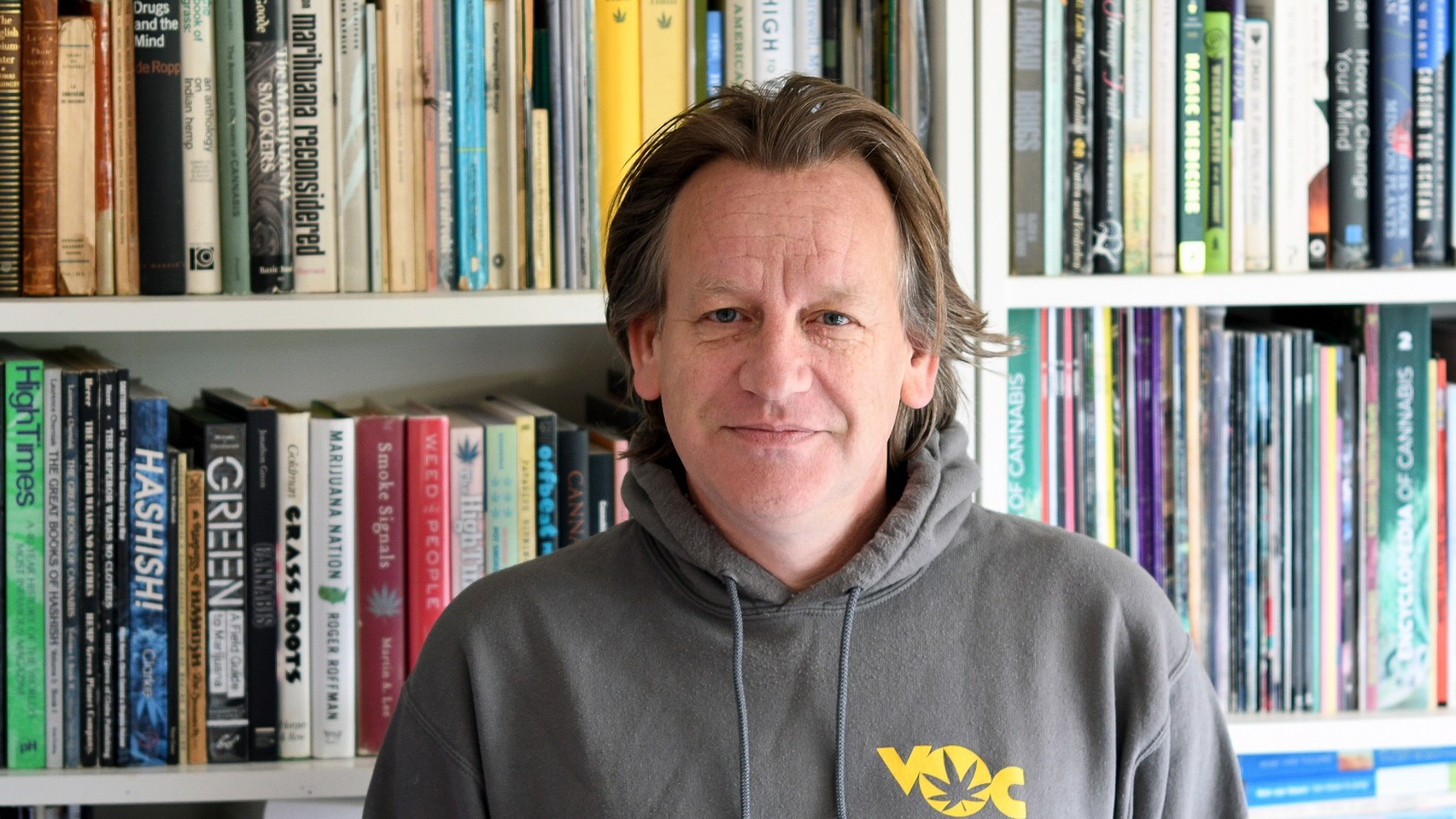
The trend toward post-Covid take-away shopping has eased some of the pressures but it also diminishes the role of coffeeshops as social gathering places where use is kept off the street and social norms keep consumers acting convivially.
While they do not pay excise tax on their illegal sales, coffeeshops still pay income tax between 25.8 percent and 49.5 percent on stated profits. Still, the government acknowledges that millions of dollars in unreported profits go untaxed. The state also misses out on collecting taxes on the production and distribution of cannabis while simultaneously attempting to shut them down. Both seem like wasted effort and wasted opportunity.
What does Noah’s family think of his part-time job? “Only my parents know, the rest of my family does not,” he said. “Cannabis and coffeeshops are looked down on by most Dutch.”
Given the Netherlands’ long-standing global reputation as the center of cannabis, I found his confession confusing. To better understand how the Dutch feel about cannabis, I took the train down to Eindhoven across the Netherlands’ green desert of grazing cows and quaint towns to meet with Derrick Bergman. His home office overlooks a quiet street. The back wall is taken up by a large bookcase of cannabis bibliography. The room is filled with the pungent smell of a coffeeshop as we sit down for stroopwafels and tea.
Derrick is chairman and spokesperson for the Union for the Abolition of Cannabis Prohibition (VOC), which advocates the legalization of cannabis and civil rights of those who consume it. He also works as a freelance writer for several cannabis media outlets and the Netherlands’ two coffeeshop trade associations, PCN and BCD.
He is not surprised by Noah’s remarks. Amsterdam may be known worldwide for its drugs and prostitutes but the Dutch themselves are quite culturally conservative when it comes to those trades. While pop culture in the United States paved the way for the widespread acceptance of cannabis use with movies like “Harold and Kumar go to White Castle,” TV shows like “South Park,” and figures like Snoop Dogg, Willie Nelson, Bill Clinton, and Barrack Obama normalizing use, such a cultural transformation has not reached the Netherlands even five decades after the first coffeeshop opened. “The Dutch term for someone who uses cannabis is ‘blower,’ akin to stoner or wino, it connotes something negative,” Derrick said. “Tolerance is not acceptance.”
To break through the cultural barrier in 2017, his VOC tried to produce short videos of prominent Dutch stars and athletes talking about their cannabis use. Few would do it because the potential for negative blowback was considered too risky. “It was very hard to get famous people to take part, so we changed the formula to include non-famous everyday people to talk about their cannabis consumption,” he said. “But this turned out to be quite hard as well.”
The cultural antipathy toward drug use is backed by numbers. Cannabis use among Dutch residents in 2020 hovered around 10 percent, compared with 22 percent in the United States. Similarly, the use of cocaine, amphetamines and opiates were all lower in the Netherlands than in the United States, according to the United Nations Office on Drugs and Crime. The only exception is ecstasy—the Dutch need to get through their 12-hour techno festivals somehow.
While cannabis use may still be looked down on, 60 percent of the population thinks the production and sale of cannabis should be legalized, with only 11 percent believing the current system works well, a NL Times survey reported. The poll also found that political leaning affected opinion, with left-leaning Dutch favoring legalization while conservative-leaning Dutch preferring to keep the current system. On the other side of the Atlantic, 88 percent of Americans favor legalizing cannabis, according to the Pew Research Center.
Facing tough regulatory scrutiny and public apathy, coffeeshop owners tend to stick to themselves. “It’s not just the police raids and checks but also the ever-growing amount of rules and regulations, the negative media attention and the negative, stigmatizing way that a lot of local and national politicians talk about cannabis and coffeeshops,” Derrick said. Of the 565 coffeeshops spread across 102 municipalities, less than a third are part of either the BCD or PCN trade associations.
Unlike in the US, where capitalist forces have created large cannabis businesses operating at multiple locations, the vast majority of coffeeshops here are owned independently. “They don’t see the value of pooling their resources and acting like a strong political force,” Derrick said. “Their mentality is: we built and sustained our coffeeshops without your help, why would we join an organization to listen to you?”
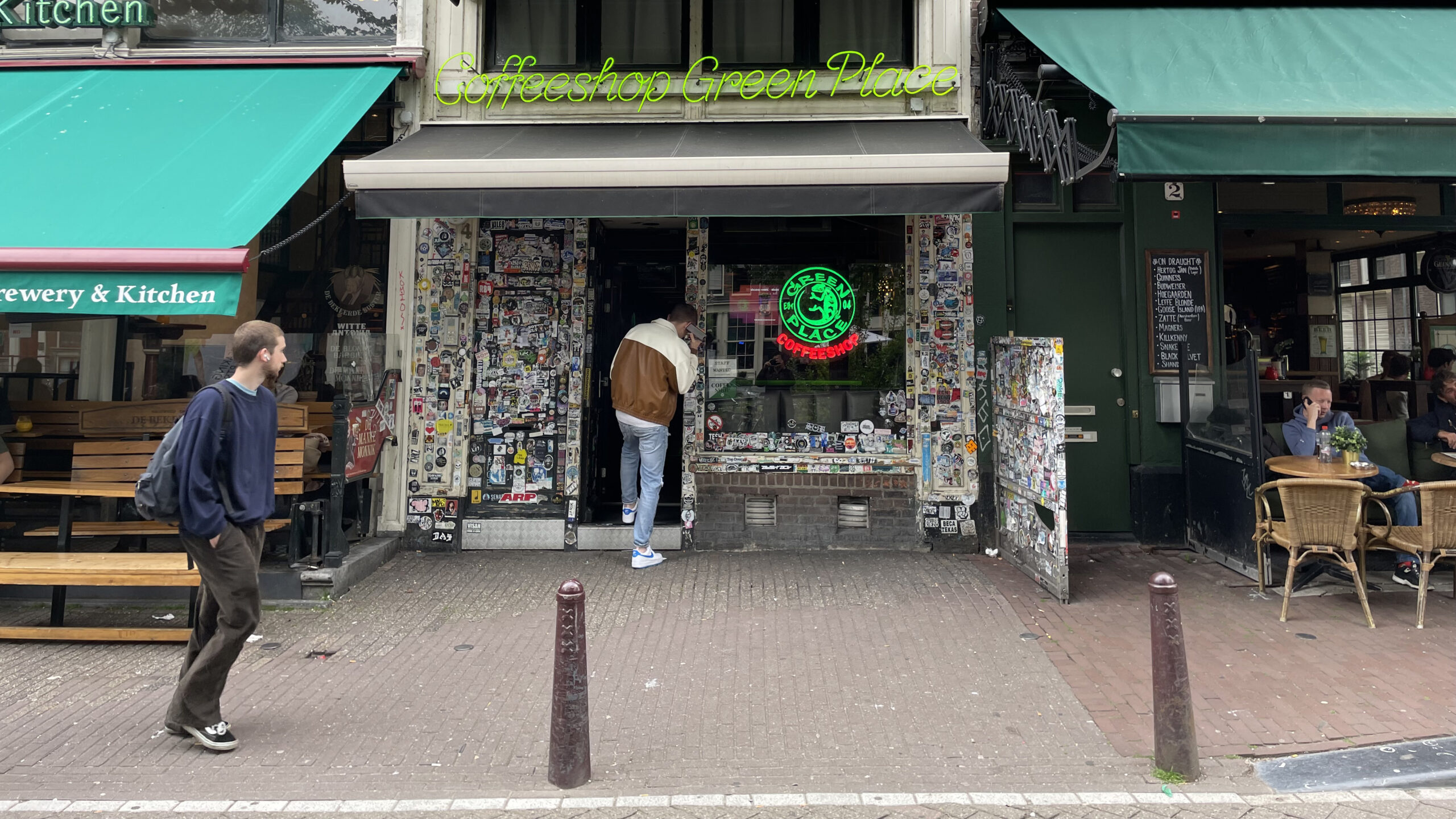
The only sign of relief on the horizon for coffeeshop owners and cannabis users is a regulated cannabis supply pilot that started in December 2023. As of June 2024, the Controlled Cannabis Supply Chain Experiment involves 10 government-designated growers that will distribute cannabis to 80 pre-authorized coffeeshops with standardized quality controls and packaging information.
The Dutch government says the experiment’s goal is to “see whether it is possible to decriminalize the supply of quality-controlled cannabis by growers to coffeeshops and determine how this can best be done.” The first batch was ceremonially opened by the Dutch Health Minister. After the pilot is set to end in four to five years, the previous restriction will automatically come back into place if the future government does nothing to change them.
If it happens to be controlled by the right-wing firebrand Geert Wilders, as currently the case, those odds are slim. Members of the Christian Socialists and Wilders’s Party for Freedom (PVV) I contacted for comment did not respond. However, Wilders’s new coalition agreement includes strong language about the need for continued prohibition of drug production and sale, and the need to crack down on organized crime, which could further tighten the screws on coffeeshop owners.
If you visit Amsterdam, you’d be forgiven for believing it’s a hedonistic playground where cannabis is sold like candy with no rules. Because you would be right—partly. As I’ve described, coffeeshops operate under tight scrutiny and are not allowed to advertise. But if you walk on any street through the Centrum neighborhood within the confines of the Singelgracht canal in the heart of the city, there’s a good chance your senses will be accosted by cannabis-branded cookies, lollipops, energy drinks and brownies promising disorienting delight staring out at you from tourist shops, smoke shops and kebab stalls—anywhere close to tourists.
How can that be? A close look at the back sticker of those products show that ingredients include hemp seeds or hemp oil. Hemp is cannabis with less than 0.3 percent THC (the main psychoactive compound) used primarily for the industrial production of products such as rope and clothing. The informational sticker does not give the concentration of THC, CBD or any other psychoactive substance supposedly in the product.
The fact that those products are falsely branded as cannabis makes me suspect there are no standardized quality controls. There is no social environment to moderate use. It is a completely unregulated market that makes Amsterdam look like a cartoon version of its beautiful self and poses health risks to unsuspecting users. That is particularly appalling given how strict authorities are with coffeeshops.
Reflecting on the coffeeshop model and government’s cannabis policies, it’s easy to point out the shortcomings. The most glaring being that by keeping the production of cannabis illegal, the government creates opportunities for criminal entrepreneurs to cut their teeth in this milder climate before moving on to more profitable substances like cocaine—what Derrick calls “the golden elevator of crime.”
However, the US has not deterred crime or made communities safer through its punitive drug approaches. Since President Nixon called for a war on drugs in 1971, America’s incarcerated population has grown by a factor of six to around 1.8 million, a ratio per 100,000 people that is eight times higher than in the Netherlands. Today, the US also has a homicide rate six times higher than in the Netherlands. One in five incarcerated people in the United States is imprisoned primarily on drug possession charges, with an arrest for a drug offense coming every 31 seconds.
That costs American taxpayers around $40,000 per prisoner per year. US cannabis advocates have suggested that since the 1970s, the authorities have arrested 30 million people for cannabis possession in a system imbued with racial and socio-economic bias. The lost human potential is staggering, and while cannabis use fluctuated heavily in the past five decades, it is now higher than ever.
It’s unclear what the future holds for Dutch coffeeshops. International examples of cannabis policy in US states, Germany and Spain provide alternative models for national and European policymakers. The post-Covid-19 take-out option also brings into question their core function as social gathering places. But if I’ve learned anything about the Dutch in the past two months, it’s that they will almost certainly discuss, discuss, discuss until a new compromise that respects individual freedom and social order is reached.
Back in Hansel and Gretel’s cabin in the woods, the coffeeshop cowboys and cowgirls listened attentively to the panelists or chatted among themselves while rhythmically puffing smoke into the air. Waiters came around with freshly baked pizzas for growing appetites, and during the break, a DJ played reggae-inspired beats. Some cannabis stereotypes hold true regardless of the country.
Top photo: Boerejongens Coffeeshop, Amsterdam


